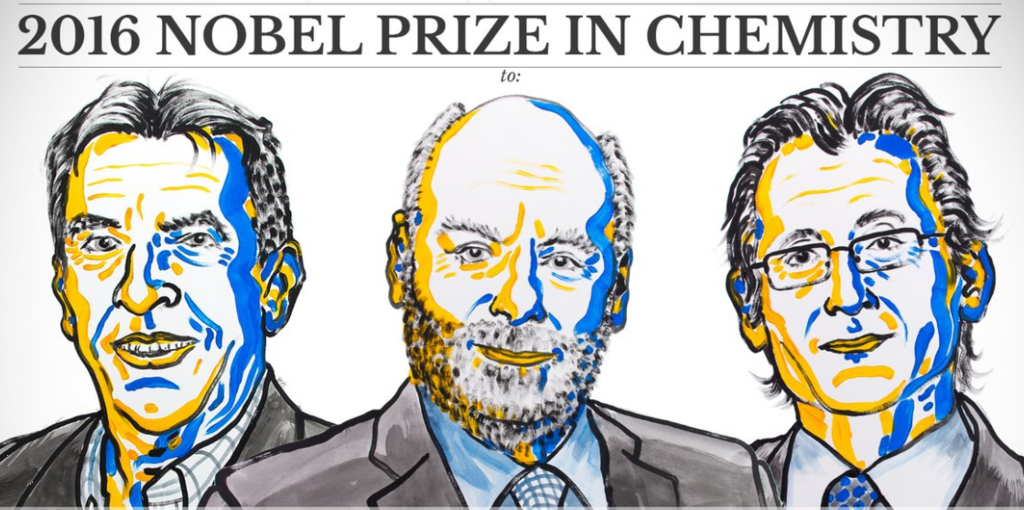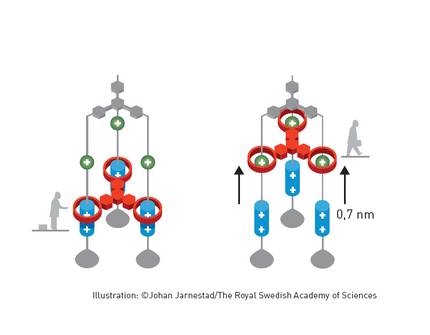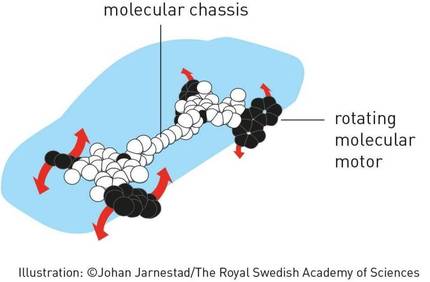The Chemical Novel rewards those who developed the smallest machines in the world
2016/10/05 Agirre Ruiz de Arkaute, Aitziber - Elhuyar Zientzia Iturria: Elhuyar aldizkaria

They are typical machines of living beings: structures formed by proteins capable of working with an energy source. But human design and creation can open up endless possibilities. The Nobel Prize in Physics, Richard Feynman, has already advanced in the 1980s that the miniaturization of technology could mean a real revolution, and the Nobel Foundation has wanted to reward this year the initiators of this revolution.
The first step in the development of these molecular machines was given by Sauvage in 1983, when he managed to join two molecules in the form of a ring creating a chain. Instead of connecting these two molecules with the traditional, powerful covalent bonds, in which atoms share their electrons, bound together by a freer bond, the researcher got both sides to move. This is what a machine needs in its operating base.
Years later, in 1991, Stoddart developed the rotaxane, establishing a fine axis within a molecular ring, which managed to move the ring through the axis. So he designed the elevator that moved with 0.7 nanometers. He also developed molecular muscles based on rotaxanes.
And Feringa, third winner, developed the first molecular motor. In 1999 he managed to mount the molecular motor that turned his wing in the same direction. With this system he managed to move a glass cylinder 10,000 times larger. The design of the first molecular car in history was also the achievement of the Fering team, which in 2011 turned four wheels of molecules, united in a kind of molecular chassis.
The press release published by the Nobel Foundation indicates that at present the molecular motor is in the development phase in which the electric motor was in the 1830s, when they did not know exactly what tools would mobilize in the future. But Feringa himself has set the example in today's ceremony: there are already research groups that are designing nanorobots capable of getting into the blood and repairing those affected. Today, we do not know what chemistry will bring in the future.

Gai honi buruzko eduki gehiago
Elhuyarrek garatutako teknologia





